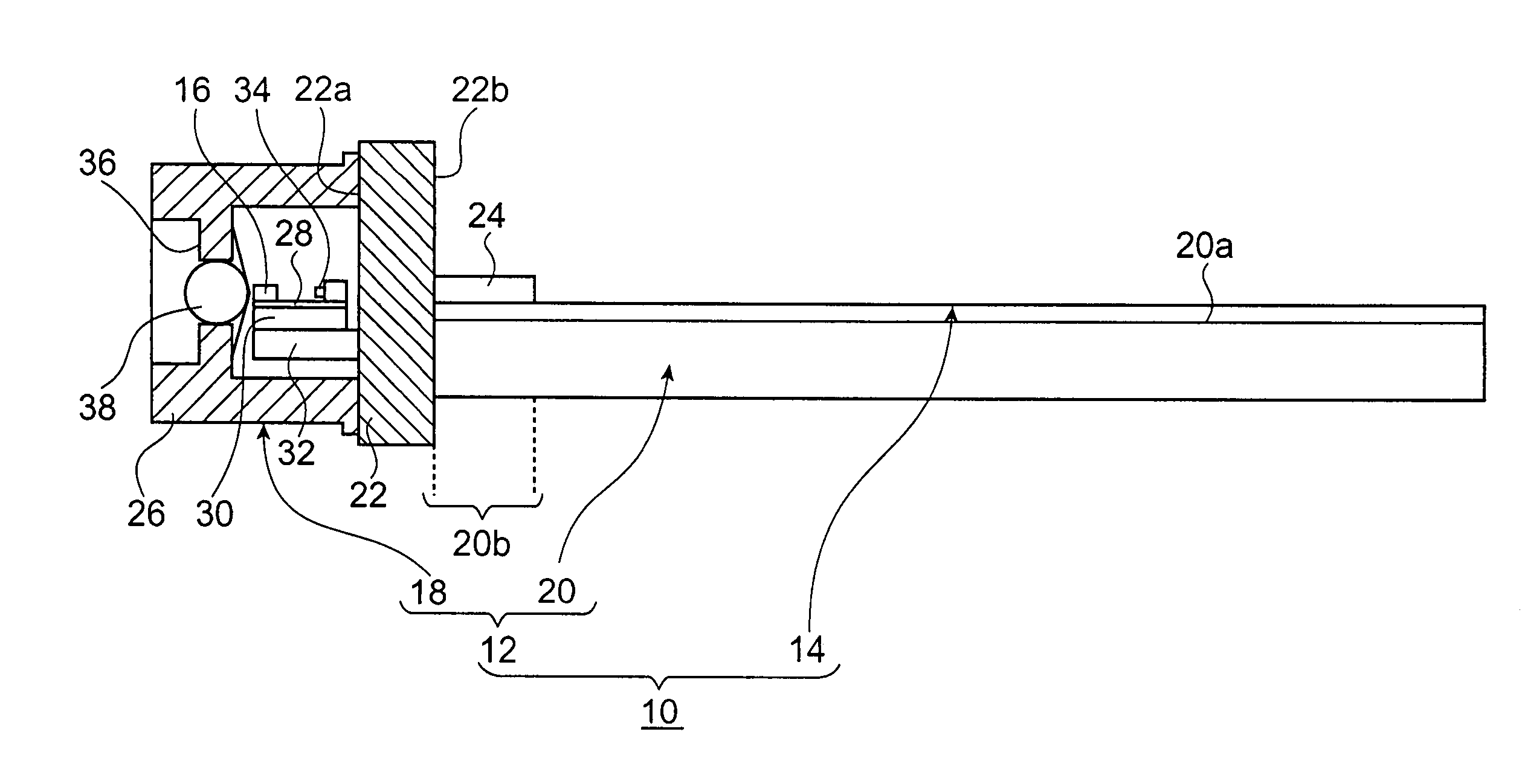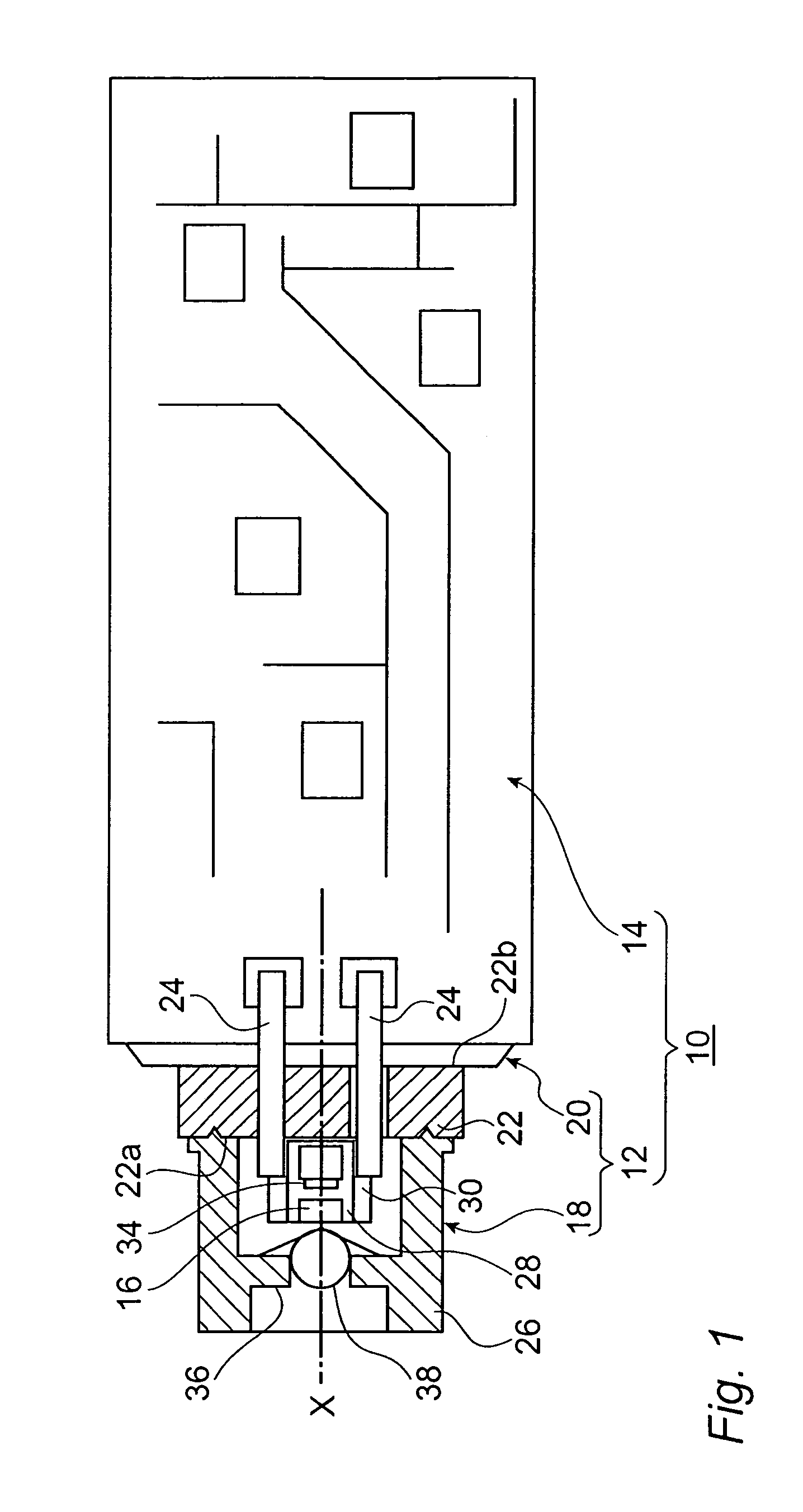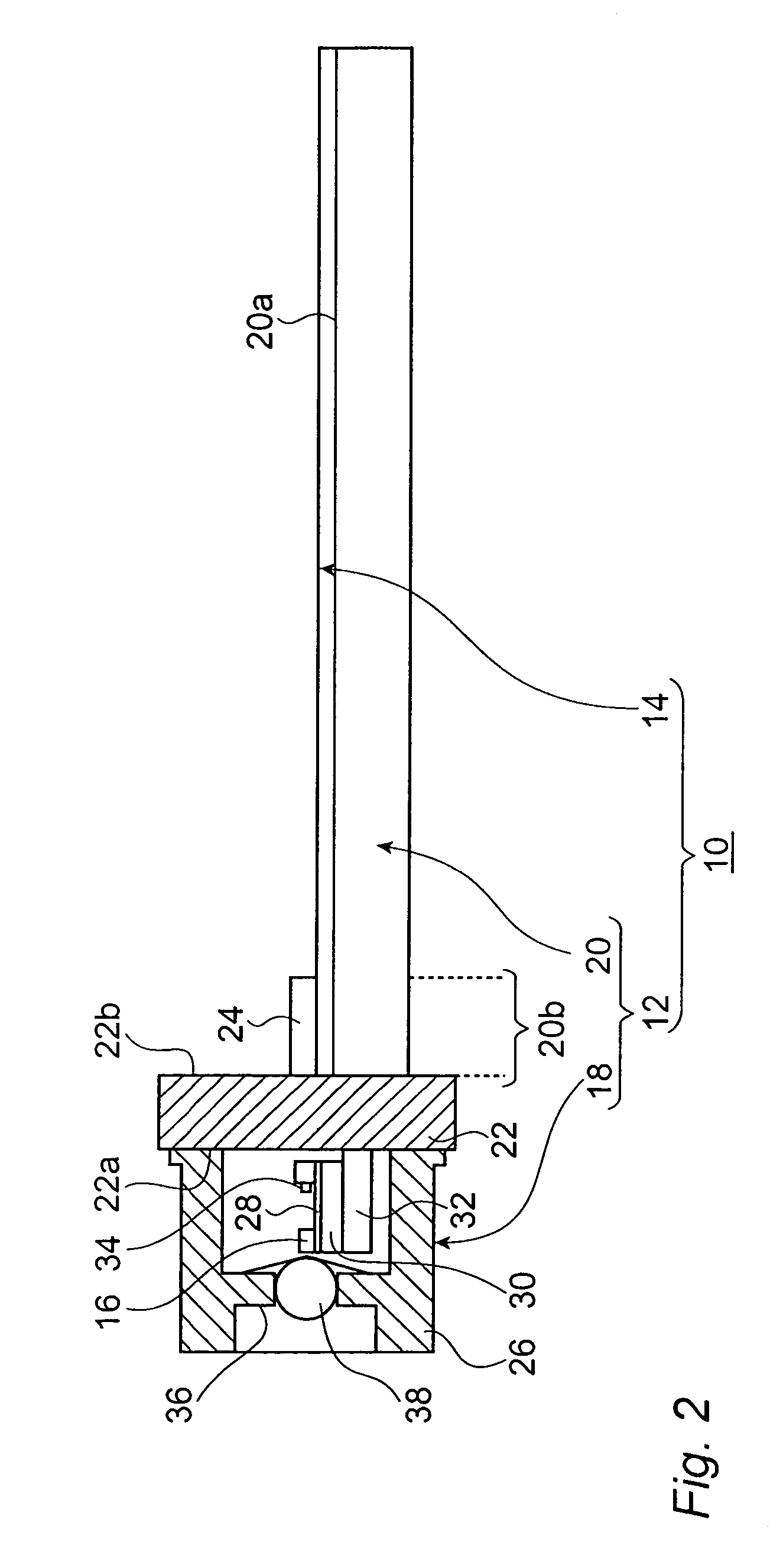Optical module
a technology of optical modules and optical components, applied in the field of optical modules, can solve the problems of comparatively expensive materials and electrical defects, and achieve the effects of facilitating substrate positioning, enhancing thermal dissipation characteristics, and affecting manufacturing
- Summary
- Abstract
- Description
- Claims
- Application Information
AI Technical Summary
Benefits of technology
Problems solved by technology
Method used
Image
Examples
Embodiment Construction
[0019]Preferred embodiments of the present invention will be described as referring to accompany drawings. In the description of drawings, elements identical to each other will be referred to with numerals identical to each other without overlapping explanations.
[0020]FIG. 1 is a plan view of a light-emitting module 10 according to the present embodiment and FIG. 2 is a side view of the light-emitting module 10. In FIGS. 1 and 2, a package 12 of the light-emitting module is partially cross-sectional view to show the inside configuration.
[0021]As shown in FIG. 1 and FIG. 2, the light-emitting module 10 comprises a package 12 and a substrate 14. The package 12 has a primary portion 18 for enclosing a semiconductor laser 16 and a base 20 for mounting the substrate 14.
[0022]The primary 18 includes a stem 22, the semiconductor laser 16, a plurality of lead terminals 24 and a casing 26 of a can type. The stem 22 is made of a metal such as CuW, Kovar and iron, and has a shape of a disk. Th...
PUM
 Login to View More
Login to View More Abstract
Description
Claims
Application Information
 Login to View More
Login to View More - R&D
- Intellectual Property
- Life Sciences
- Materials
- Tech Scout
- Unparalleled Data Quality
- Higher Quality Content
- 60% Fewer Hallucinations
Browse by: Latest US Patents, China's latest patents, Technical Efficacy Thesaurus, Application Domain, Technology Topic, Popular Technical Reports.
© 2025 PatSnap. All rights reserved.Legal|Privacy policy|Modern Slavery Act Transparency Statement|Sitemap|About US| Contact US: help@patsnap.com



